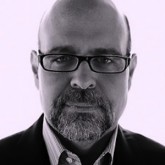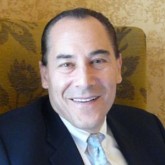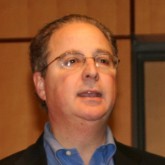Chapter 5
Then Came Cable
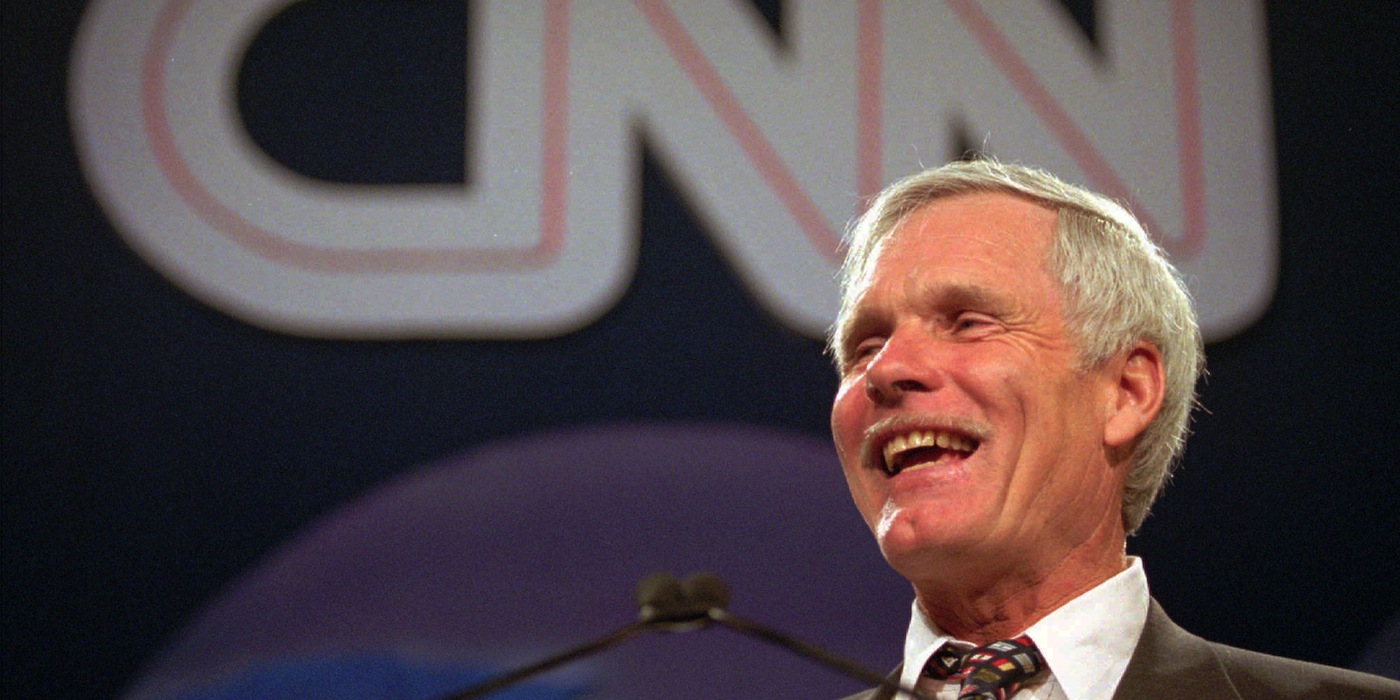
Someone came to visit CNN from Apple. QuickTime had just come out, and they were looking to do a news magazine on CD-ROM to challenge Time and Newsweek and approached us about it. I got into this totally by chance, literally walking down the hall, when someone asked me, “What can you do for this guy?”
This was my, and really CNN’s, first exposure to digital technology when it comes to interpreting news in some way. We put together a prototype of a disk…. It turned out great. It took maybe two months to do it with some resources that Apple gave us.
We [took the prototype] to management at CNN, and they looked at it and said, “This is interesting, but it’s really not our business. Thanks for the disk. Go back to your day job,” which…was executive producer for the prime-time newscast. Again, this is spring of 1991, and at this point it really got me interested in what the digital technology could do to expand the audience at CNN.
So Woelfel began collaborating with a few other people at CNN, including Harry Motro, a former Coopers & Lybrand auditor who was then working in business development, to see where it might lead.
Our first deal was with CompuServe. They were aggressive. They were much bigger than AOL to start with. I think we initially spoke to CompuServe and Prodigy. We didn’t get to AOL ’til later, although I do remember meeting with Steve Case in a little conference room…. Maybe it was in ’93. Steve was telling us how this [AOL] was going to be much more creative, much more colorful, much more interesting.
It was dial-up, so you were repurposing or creating text or stills, with no video. It was still not a TV experience like CNN was, correct?
It was really tough for us because we didn’t have content. It forced us to do some work, but on the other hand we had the right brand because the CNN brand meant instant news.
We had the right mentality of going after a new opportunity, I think. The bad news is that all the text that sat inside of CNN was scripts. It was people writing stuff for someone to read over, which didn’t fit if you didn’t have a video. What we had to do was figure out how to get rights to Reuters and AP. This is where Burt Reinhardt (a longtime CNN top executive) single-handedly enabled the creation of CNN Interactive.
I think he used to work at Reuters. He knew them forever. He was a trusted figure in the industry. CNN negotiated massive deals with Reuters for content. Otherwise, we [would’ve been] paying them a lot of money.
[But to get back to the dial-up services…] Early in CompuServe, the value that they wanted from us was on-air promotion because they were trying to advertise on the cheap. We wanted to really experiment with the integration of television and online. We had people creating news, basically rewriting Reuters and [later] AP…. But we also had a staff of people who were monitoring the [online] forums. That was actually the more interesting part because you could see usage spikes around shows.
There was a show that was done in the center of the CNN Center in the floor in the [shopping] mall [there]. It was a live show in the afternoon. It was sort of our feature integration show. It was actually a great learning experience. It was probably one of the most heavily integrated early shows that was done, especially around news.
[To Scott Woelfel:] Talk about the process of getting a new media division started. This was a cable television network company taking a step into a new space. Can you talk about how easy or hard it was to get funded and [how was it structured? In the newsroom, or separately?]
It was surprisingly easy, I think, because what we were doing was so unknown to the television industry. It wasn’t seen as a threat to anything else. We put together the plan — Harry Motro was actually the one who did it — but we eventually got referred to Ted, who is still not that digital today. He understood there was some potential there, referred him to John Petrovich, who was running Headline News at the time, and basically we were funded and actually operated under him at the beginning of CNN Interactive. Harry really handled the funding part. My job was to put together the team and make a product out of it.
That was a pretty controversial time because the newspapers were trying to keep AP from doing it, but Reuters did it with Yahoo and kind of set wire stories free into the “Great Free Internet” at the same time. Do you remember that and how that related to what you were doing and what you thought the competition was doing?
Very much. It was an ongoing “frenemy” struggle with both Reuters and AP, but more with AP, over my entire tenure at CNN.com. They clearly wanted to be the fuel that powered this revolution in news, but, as you say, they were beholden to their members and were never really comfortable with the degree of how much was being used…especially as we grew so quickly and generated revenue so quickly.
I want to go back to the rationale for your developing this. The newspaper folks — Tony Ridder, others — really were focused on classified advertising and the disruptive potential of this technology….There was no existential threat at CNN. It neither threatened the television advertising business nor, at that time, the cable MSO subsidy. As I recall, Ted Turner didn’t even like it. Why did you even do this?
I’m not going to take that much credit for it. It was actually the Turner entrepreneurial culture. That’s what I really think it was, that “Hey, here’s a new business. Let’s go explore it.” It was not heavily funded. It was really self-funded through CompuServe. We got a million from LexisNexis. We got a million from CompuServe.
Right. They paid you. That’s the key. They paid you for the content.
We had started our offices under a stairwell. It was the most unattractive space in the entire CNN Center. The windows were papered off because you weren’t supposed to look in. Wires in the ceiling. It was a little hellhole.
We started there, but as we gained momentum we finally moved to a marquee spot because they were starting to show it off, because it started to be cool. That was the first time I got Ted to come down and look at our webpage.
I was nervous. What’s Ted going to think about it?…This was on a T1 [line] in CNN center. For some reason it was slower than usual and it was a slow load, and after about two seconds Ted was, like, just didn’t get it. Big thumbs down. And walked away. I’m thinking, “My God, good thing he didn’t see it on dial-up the way most people did.”
I have to give Ted’s brilliance full credit. Even though he didn’t get it, his entrepreneurial gut said, go, do it, [he] supported it, was interested in it.
The other thing I think: Ted had a fascination with what was going on in [Silicon] Valley. He closely followed the net worth of [Bill] Gates and Larry Ellison. That got his attention.
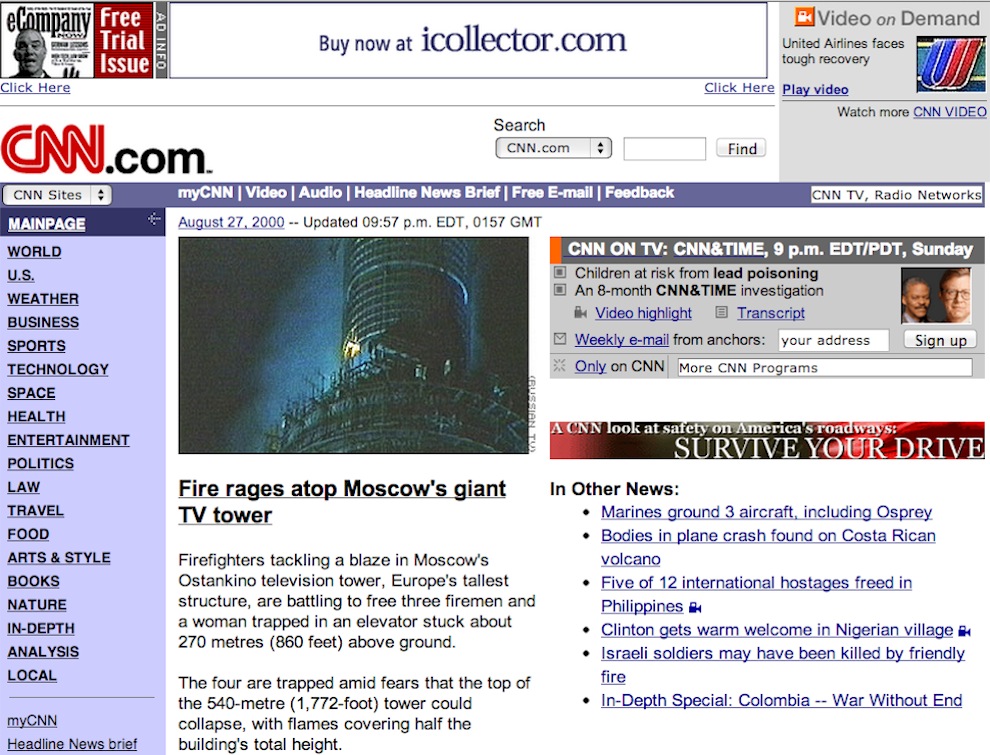
I can’t remember if it was [CNN technologist] Scott [Teissler] or Sam [Gassel] who showed me for the first time what a hyperlink was. I said, “That’s really cool.” I was in my young 30s. I still hadn’t really made my career, so I said, “This is great. Let’s go do this.” We were doing the content anyway, and getting paid for it by CompuServe and LexisNexis, so let’s get some incremental revenue here.
Early on, we said we wanted to take that essence of what we think CNN is to the web, and that is breaking news and coverage of live events and things like that…We thought breaking news would be our bread and butter. We found almost immediately that was the case.
We had a very sharp uptake, and if you looked at our traffic patterns, what you would see is a stair [step]…pattern where we would gain audience around a news event, and we would lose very little of it. Then the next news event, we would gain more audience, and we’d lose very little. That stair step continued for I would say at least the first two years to be very significant, without a lot of drop-off, which was in great contrast to what you would see on CNN television, which would get those huge spikes of ratings, but then it would drop back down to a baseline that grew very little.
Who did you think the competition was every morning? Was it Yahoo News, or other sites? Was it simply [an] early…green field [opportunity] and therefore [you] just keep building an audience and don’t look backward?
There was competition that arose every time. Like the portals, and obviously the news organizations, very few of which were 24 hours a day. We really did give that sense of being there. We were able to grow on that, and establish that reputation early. Clearly then we did get a lot of competitors over time, but I think we were able to stake out a pretty interesting space early on.
[To Scott Woelfel:] Scott, do I remember this correctly? Wasn’t there a period in there where Microsoft tried to do a deal with CNN.com instead of NBC?
Yeah, before we started CNN.com — so it was in 1994 — and Harry Motro and myself and John Petrovich, might have been just us three. There might have been one more, I don’t remember. We went to Redmond and met with the people there…. Harry took the deal back, and Ted looked at it, and turned it down. For a good reason, I’m sure. Harry can share. I wasn’t privy to that meeting. That was their first choice before they went to NBC.
They tried to do a CNN-Microsoft deal before the MSNBC deal. Nathan Myhrvold (a senior Microsoft executive) came. We all sat in a big conference room. A lot of meetings. They wanted half of CNN in perpetuity digitally. A lot of people talked about it, and they were going to throw a lot of money at it to create it, and Ted said no. At the end of the day, he was not going to give away half of CNN for any amount of money. He knew the intrinsic value of the CNN brand and so he said no.
Meanwhile at NBC, CEO Bob Wright was well schooled in both cable and Turner Broadcasting from his stint living in Atlanta trying to close an eventually aborted acquisition of Cox Cable by NBC owner GE. Perhaps hearing Ted Turner’s footsteps just a bit, he had gotten far out in front of the other broadcast networks with aggressive investments in cable channels. And now NBC was eager to leverage its combined news and cable assets by striking a deal with Microsoft for a dot-com news play. Tom Rogers, an attorney by training, was head of NBC Cable at the time.
We put together an approach to Microsoft. I remember that Andy Lack, then president of NBC News, and myself sat down with Bill Gates, and basically pitched him on the assets and strengths of NBC and how a partnership between Microsoft and NBC might be put together. Obviously, we were successful in getting him to think that we were a better way to go than CNN.
Why did you want to work with Microsoft?
There were two things that drove that. One was, it was clear that we needed to have a broader catalyst for driving into new media…. We looked at Microsoft as a partner with a substantial amount of Internet traffic, a substantial amount of financial resource, and a substantial ambition to move forward in media in some way. Two, we were very much looking to take a cable channel asset we had, which had been started as America’s Talking,…. It certainly gave us a vehicle around which we could have a discussion about creating a more full-fledged news channel. We had created CNBC and a business news channel, but had not had a general news [cable] platform. We knew that Microsoft was interested in that very platform because of the discussions they had had with CNN. We put this forward as a way they could have it and own 50 percent of it, and we would bring the full resources of NBC News to it. We were also looking for a partner that could help us fund and develop a broad news channel.
The third piece of this was that we were very interested in how traditional news and Internet news could [be] fused into a single franchise where the two could [be] strengthened by some joint undertaking. The brand would stand for both forms of news. A viewer or user would be able to benefit by going back and forth and understanding how the two pieces fit together. That was the most revolutionary part. That was the part that…was the rockiest. But that was the formative thinking around it.
To help execute the joint venture, NBC enlisted journalist Merrill Brown, first as a consultant, and then in 1996, as the man to move from the East Coast to Seattle and run MSNBC.com.
So, talk about the founding of MSNBC.com in Seattle. It’s one of the more interesting ventures because it combines a significant journalistic institution, NBC News, with a huge technology company.
There were technology challenges around that. There were cultural challenges around that. There were journalistic challenges around that. It was a very intense period of time. Doing anything in real-time news on the web in that period was challenging. The mere act of publishing was tricky.
And you mean that from a technical point of view.
From a technical point of view, the content management systems were in their infancy. For NBC, trying to deliver real-time news on this very, very fragile platform caused a lot of friction because they didn’t understand that when a plane went down, or something happened, the turnaround time on that wasn’t the same as breaking into a cable network or a broadcast network. At the time it involved a variety of steps that we today take for granted in the content management world, but then it was rocky.
Talk about where the content is coming from.
Multiple ways. First of all, we had probably at the time 30 people in New York, under Lynn Povich, who was a key hire, who was charged with integrating NBC News. We had people in D.C. The principle function of those people in New York and D.C. was to attempt to extract words from television people, which was no small challenge, in part because they didn’t have desktop computers. They had only television news computing systems [closed systems].
Microsoft could not understand it. There actually was an information company that didn’t operate on some Windows system from which we could actually get words. There was actually enormous resentment about the fact that they weren’t all racing toward Windows.
We had to literally go and sit down with them, interview Andrea Mitchell and Pete Williams and other NBC correspondents. Take down their stuff, sometimes transcribed on the phone, sometimes on notepads or laptops, and literally pull content from them so we could rationalize the expenditure of effort and money on NBC in the short run, where they had very, very few natural assets.
The only people that I remember who were doing a great job of really being on top of breaking news were the folks at Yahoo News [who had] access to the Reuters wire. And CNN.com, who somehow mastered this, despite the fact that they had a television operation.
[CNN] was a television operation that had 20 years, or 15 years, whatever it was, of breaking news experience. They knew how to go after [and] cover [a] story in real time, which NBC didn’t know how to do. NBC didn’t have any years of doing that.
The only solution to the problem was to build significant, original journalistic capability, largely in Seattle, where people could produce stories, cover stories, do reporting. I sent them on the road. I sent people to the war in Bosnia. I sent people to the Middle East. In some cases, to facilitate NBC News producing content for the web, but in some cases just to get stuff.
But what that really means, “to facilitate NBC” is to make sure you got something out of there because they weren’t giving it to you.
Precisely.
Was there a business model besides the fact that there were two rich parents at the time?
Nothing but weak efforts at ad dollars, which Microsoft was terrible at for years — really, really terrible at it. We had lots of conflict about the fact that we couldn’t get their attention, in part because our inventory was worth 50 cents on a dollar to them, and Expedia’s was worth a dollar on a dollar [because of the ownership structure].
Were there specific stories that changed the perception of the parents or made the JV [joint venture] stand on its own?
Among the really important things we did was aggressively and quickly integrate with [NBC News programs] Dateline, Today, and Nightly News. We did this incredible thing of getting our URL on their screen. In ’96 and ’97 the act of creating [an on-screen graphic] that had an Internet address on it and actually might have a reason to send people to the Internet, was revolutionary in many ways. In prime-time television, we were the first people to do that.
So, effectively, your promotion, or at least your impressions, were far greater than what CNN could drive to their own site?
We had two brand and audience strategic advantages that nobody had: A broadcast network that was willing to integrate with us, and a [web] portal that was fully integrated with us. Big, important advantages.
[To Tom Rogers:] Let’s talk about the business model for just a moment. Did you ever think about at the time the idea that it might be a good idea to charge for the service given that there were no cable subsidies? In other words, you were committing to a one revenue stream business. As a cable guy, you must have thought: “I don’t like this as much as cable,” to be blunt.
It was clear by the mid-’90s that [the model of charging cable systems for retransmission of programming] was a really powerful business model. It’s only become more so.
Our view was that it was going to take a much longer period of time for the business model around Internet news to develop. Microsoft had a much more aggressive vision of how quickly that would come about.
No, we didn’t really consider charging a subscription fee…. Our view of the deal was that it was clearly driven off of our optimistic view of cable, and a very long-term view of what it would take for the Internet. Microsoft had a very bullish, near-term view of the Internet. They were not as enraptured by what the cable economics might look like. Those disappointed expectations had something to do with the souring of the relationship with MSNBC. Ultimately, years later, that partnership dissolved.
For all the fits and starts of these early online news efforts at CNN, Yahoo, MSNBC, and AOL, these four sites were destined to enjoy huge success in the traffic-chasing, banner ad — selling days that dominated the second half of the ’90s and on into the early 21st century. Even today, all of them remain — along with Google News, The New York Times, and the upstart Huffington Post — at or near the top of audience usage rankings for U.S.-based news sites.
